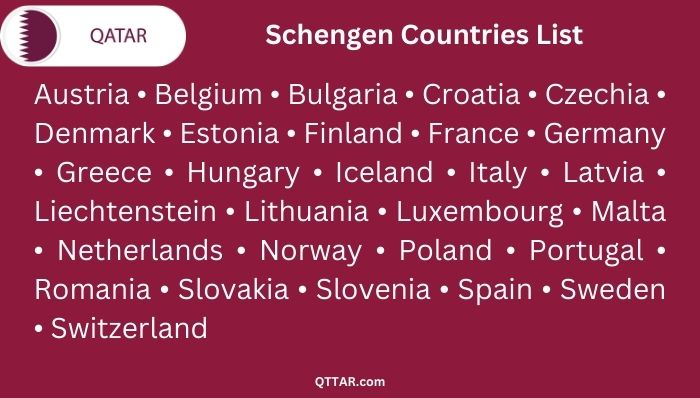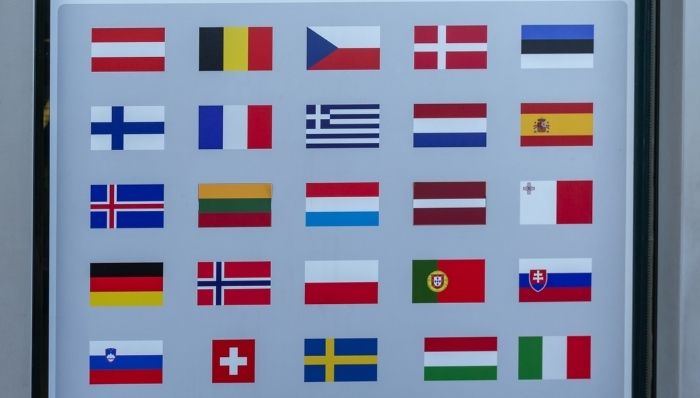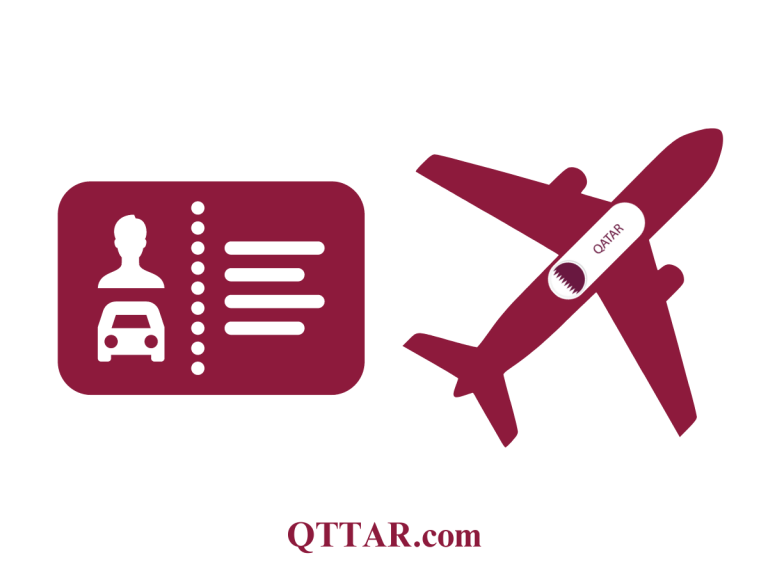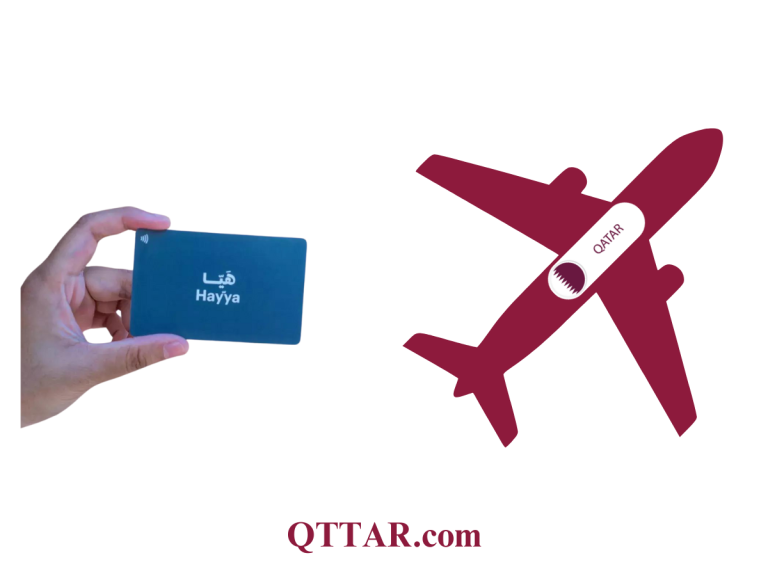Schengen Countries List 2025: Free Travel in Europe
The Schengen Area comprises 29 European countries that have abolished internal border controls.
This blog post provides a comprehensive overview of the Schengen country list, its benefits, and the process of joining the area.
Schengen Area Member Countries
The Schengen Area currently consists of 29 member states. These countries have agreed to allow free movement of their citizens within the area as a single jurisdiction for international travel purposes. Here is the complete list of Schengen Area member countries as of 2024:
Full List of Schengen Countries
- Austria
- Belgium
- Bulgaria
- Croatia
- Czech Republic (Czechia)
- Denmark
- Estonia
- Finland
- France
- Germany
- Greece
- Hungary
- Iceland
- Italy
- Latvia
- Liechtenstein
- Lithuania
- Luxembourg
- Malta
- Netherlands
- Norway
- Poland
- Portugal
- Romania
- Slovakia
- Slovenia
- Spain
- Sweden
- Switzerland
It’s important to note that not all of these countries are members of the European Union (EU). Iceland, Norway, Switzerland, and Liechtenstein are part of the Schengen Area but are not EU members. Conversely, not all EU members are part of the Schengen Area.

Recent Additions to the Schengen Area
The Schengen Area has expanded over time, with countries joining at different stages. Some of the most recent additions include:
- Croatia: Joined on January 1, 2023
- Bulgaria and Romania: Joined partially on March 31, 2024 (air and sea borders only)
For Bulgaria and Romania, it’s worth noting that while they have joined the Schengen Area for air and maritime borders, land border controls are still in place pending further agreement.
Benefits of the Schengen Area
The Schengen Area offers numerous advantages to both its citizens and visitors. Here are some of the key benefits:
Free Movement of People
The most significant benefit of the Schengen Area is the free movement of people across member countries without the need for border checks. This allows:
- More than 400 million people to travel freely between member countries
- Approximately 3.5 million people to cross internal borders daily for work, study, or personal reasons
- Nearly 1.7 million people to reside in one Schengen country while working in another
Economic Benefits
The Schengen Area brings substantial economic advantages to its participating states:
- Boosts tourism and cultural exchange, with an estimated 1.25 billion journeys made within the Schengen Area annually
- Facilitates trade and business activities across borders
- Reduces transportation costs and time for goods and people moving between countries
Enhanced Security Cooperation
While the Schengen Area has removed internal border controls, it has also led to increased cooperation in security matters:
- Shared Schengen Information System (SIS) for law enforcement
- Coordinated efforts to combat cross-border crime and terrorism
- Unified approach to external border control and visa policies
Joining the Schengen Area
Countries wishing to join the Schengen Area must meet specific criteria and go through a rigorous evaluation process.
Requirements for Joining
To become part of the Schengen Area, countries must:
- Apply the common set of Schengen rules, known as the ‘Schengen acquis‘
- Take responsibility for controlling external borders on behalf of other Schengen countries
- Issue uniform Schengen visas
- Cooperate efficiently with law enforcement agencies in other Schengen countries
- Connect to and use the Schengen Information System (SIS)
Evaluation Process
The process of joining the Schengen Area involves several steps:
- Application: A country expresses its intention to join the Schengen Area
- Preparation: The country aligns its laws and procedures with Schengen requirements
- Evaluation: EU experts assess the country’s readiness in various areas, including border management, visa issuance, and police cooperation
- Decision: Based on the evaluation results, EU member states unanimously decide whether to approve the country’s accession
- Implementation: If approved, the country removes its internal border controls and fully implements Schengen rules
Non-Schengen European Countries
While the Schengen Area covers most of Europe, several European countries are not part of this zone. These can be categorized into three groups:
EU Members Outside Schengen
- Ireland: Maintains an opt-out and operates its own common travel area with the UK
- Cyprus: Currently undergoing the evaluation process to join the Schengen Area
European Countries in the Process of Joining
Several countries are candidates for EU membership and, by extension, potential future Schengen members:
- Albania
- Montenegro
- North Macedonia
- Serbia
- Turkey
Other European Countries
Some European countries are neither EU members nor in the process of joining:
- Armenia
- Azerbaijan
- Belarus
- Bosnia and Herzegovina
- Georgia
- Kosovo
- Moldova
- Russia
- Ukraine
- United Kingdom (following Brexit)
It’s worth noting that citizens of many of these non-Schengen countries can still enter the Schengen Area visa-free for short stays, with some exceptions like Armenia, Azerbaijan, Belarus, Russia, and Turkey.

Temporary Border Controls in the Schengen Area
While the Schengen Agreement aims to eliminate internal border controls, member states retain the right to reintroduce temporary checks under specific circumstances.
Reasons for Temporary Controls
Temporary border controls may be implemented due to:
- Serious threats to public policy or internal security
- Major events that require enhanced security measures
- Unforeseen emergencies, such as the COVID-19 pandemic
Implementation Process
When a Schengen country decides to reintroduce border controls, it must:
- Notify the European Commission and other Schengen countries
- Provide reasons for the reintroduction of controls
- Specify the scope and duration of the measures
Recent Instances of Border Controls
Since 2015, several Schengen countries have reintroduced temporary border controls due to:
- The migration crisis
- Increased cross-border terrorist threats
- The COVID-19 pandemic
Frequently Asked Questions about the Schengen Area
Here are some common questions people have about the Schengen Area:
Can non-EU citizens travel freely within the Schengen Area?
Yes, non-EU citizens with a valid Schengen visa can travel freely within the Schengen Area for up to 90 days within a 180-day period.
Do I need a separate visa for each Schengen country?
No, a single Schengen visa allows you to enter all Schengen countries. However, you should apply for your visa through the country that will be your main destination or point of entry.
Can I work in any Schengen country with a Schengen visa?
No, a Schengen visa is primarily for short-term stays and tourism. To work in a Schengen country, you typically need a separate work permit or long-term visa.
How long can I stay in the Schengen Area?
With a Schengen visa, you can stay for up to 90 days within a 180-day period. This applies to the entire Schengen Area, not individual countries.
What happens if I overstay my Schengen visa?
Overstaying your Schengen visa can result in fines, deportation, and potential bans on future entry to the Schengen Area.

Ammara Abdullah is an experienced writer and editor specializing in technology and digital trends. With over 5 years of experience, she produces insightful articles on emerging tech, consumer electronics, and digital culture. Ammara holds a degree in journalism and is passionate about making complex topics accessible to readers.






